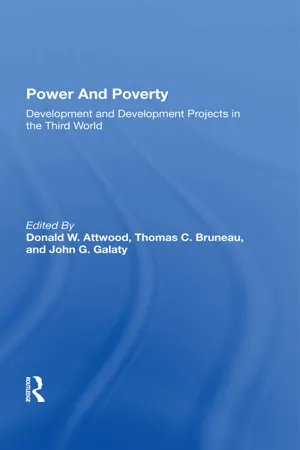Geography
Social Development of India
The social development of India refers to the progress and changes in the country's societal structure, cultural norms, and quality of life. It encompasses improvements in education, healthcare, gender equality, and social welfare programs. India's social development is influenced by historical, geographical, and economic factors, and plays a crucial role in shaping the country's overall development trajectory.
Written by Perlego with AI-assistance
Related key terms
1 Key excerpts on "Social Development of India"
- eBook - ePub
Power And Poverty
Development And Development Projects In The Third World
- Donald W. Attwood, Thomas C Bruneau, John G Galaty, D W Attwood(Authors)
- 2019(Publication Date)
- Routledge(Publisher)
5Economic Development and Social Change in Indian Agriculture: A Historical PerspectiveDavid E. LuddenIndian cultivators work their fields in little social worlds suffused with the influence of national markets, administration, and politics. The agrarian system of India today is so integrated that it is reasonable to approach Indian agricultural development through a unified, national model of agricultural conditions. This approach, futhermore, is buttressed by cultural anthropologists and Indologists confirming the underlying unities of Indian civilization.1 Scholars and politicians alike have thus spoken for many years about characteristically Indian agricultural problems, potentials and patterns of change. Scholarly discourse on development processes has generally moved directly from broad theoretical questions—concerning, for instance, the rationality of peasant enterprise, or the productivity and equity effects of specific technologies and customs—to empirical data drawn from India as a whole, or from its huge states, each holding many millions of farmers. Another approach has become more prominent in recent years, however; that is, to focus upon the diversity of Indian agriculture, and upon the little worlds of dayto-day agricultural activity. This move toward microcosmic studies—with efforts to systematize variations, and to unravel the many strands that tie little worlds to the agrarian system as a whole—may now have become pertinent to planners, too, because national development efforts must work locally to succeed.2
Learn about this page
Index pages curate the most relevant extracts from our library of academic textbooks. They’ve been created using an in-house natural language model (NLM), each adding context and meaning to key research topics.
